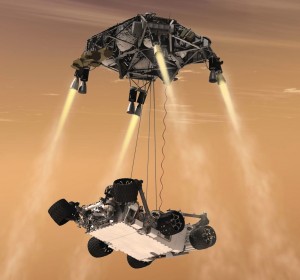 This is the stuff of dreams, imagination, creativity and innovation.This is especially cool for parents to have their children witness something “out of this world” live as it happens. This is American science education at its absolute finest.
This is the stuff of dreams, imagination, creativity and innovation.This is especially cool for parents to have their children witness something “out of this world” live as it happens. This is American science education at its absolute finest.
NASA’s Jet Propulsion Laboratory (JPL) has done it again, BIG TIME!
In normal fashion for JPL in Pasadena, this was no normal, everyday kind of landing, as Curiosity will blast into the Martian atmosphere at 13,000 miles per hour and in a death-defying “Seven Minutes of Terror” come to a soft landing on Mars. Fingers and toes were crossed. And, due to its heavy weight, it will not land like Spirit and Opportunity did about 8 years ago landing in cushioned, inflated air bags that looks like giant raspberries. Curiosity was lowered to the surface under a rocket-powered sky-crane, never before attempted by any spacecraft. Mars Science Laboratory Curiosity is the most sophisticated and complex robotic spacecraft ever built.
Even now that this event has happened, you can witness this history-making event through these special NASA TV video along with millions of people around the world.
Curiosity was launched on an Atlas V rocket from Cape Canaveral on November 26, 2011:
Some folks may have heard that there was a problem anticipated with the transmission of the landing telemetry (radio signal), possibly taking hours before we would know what happened during the landing. That problem was with America’s Mars Odyssey spacecraft orbiting Mars (along with America’s Mars Reconnaissance Orbiter and Europe’s Mars Express Orbiter). A “reaction wheel” that helps control Mars Odyssey’s orbital path location had problems, that could have impacted its ability to receive and relay the telemetry as it happens. The week before landing, JPL engineers successfully corrected the issue, putting Mars Odyssey back on course to directly receive the landing telemetry and beam it back to Earth as it is happening.
Newsflash! Curiosity has successfully landed on the surface of Mars!
Bear in mind that the transmission time from Mars to Earth will be about 14 minutes at the speed of light, so Curiosity will have experienced the Seven Minutes of Terror and landed before we get the signals from Mars. Hold your breath and wish Curiosity the best as you watch these videos!
Here are some of the first images:
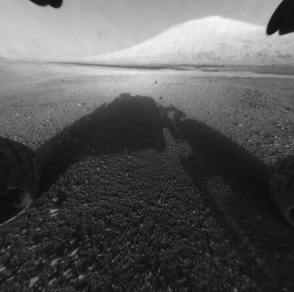 |
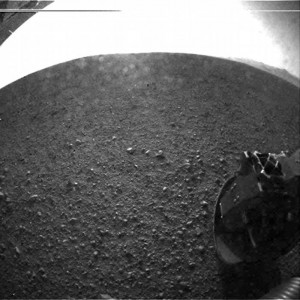 |
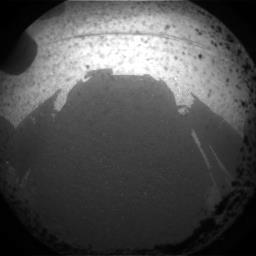 |
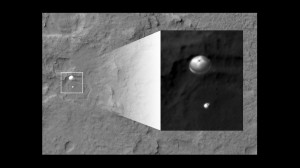 |
More images are being posted by NASA here: Mars Science Laboratory Image Gallery

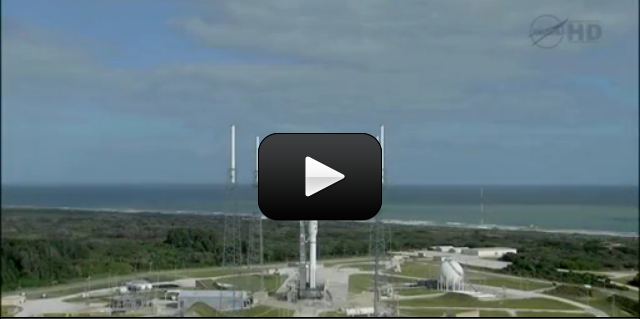
This page has information on NASA internships: https://intern.nasa.gov/
how do you get internships?
Yep, I used to work for NASA.
have you worked at NASA?
NASA has internship opportunities for people in high school. But I’m sure a person needs to be older than eighteen years old in order to be hired.
how old do you have to be to work at nasa
That depends on the work you want to do. NASA hires people from all walks of life and hires people with many different skill sets. I encourage you to visit the following page. It will show you job listings the requirements for various jobs at NASA. https://www.nasa.gov/careers
what do you have to study to work in goddard space flight center
The main subjects are math and physics/astrophysics and engineering.
what do you have to study to be a EDL engineer
I love the tension right before any ship lands and then the excitement when it does! (or docks on the ISS for that matter) 🙂
i agree with Ching-Yu Hsu. SO COOL!!!!!!!!
SO COOL
Over a decade!
They have to be really smart to make something like that. I wonder how long it took to make that.
In the past no real agreement has been made about the answer to this question, but there is some evidence to suggest that conditions on Mars may have been able to support life at some point. A famous example is a meteorite from Mars found in Antarctica in 1996 which has tiny structures that look very similar to fossilized bacteria.
Is there life on Mars?
Yes – it sure was!
Wait, was this 2012?
I used to watch a NASA TV show and saw something very much like this!